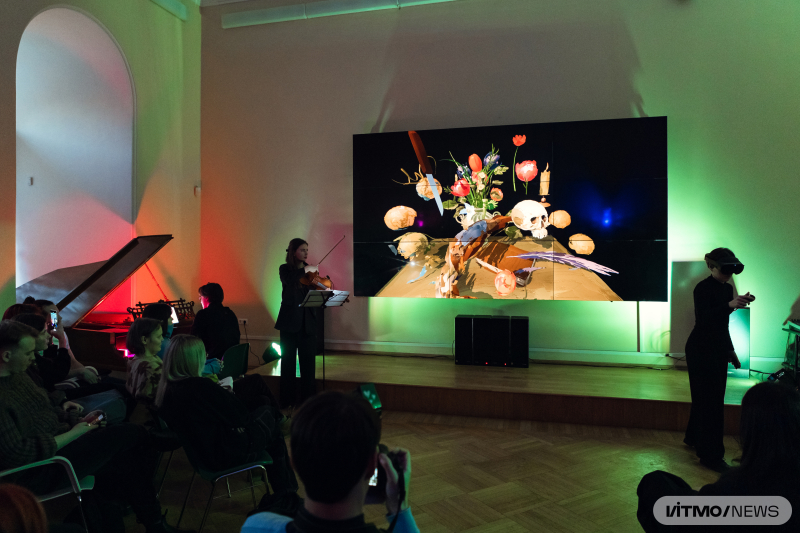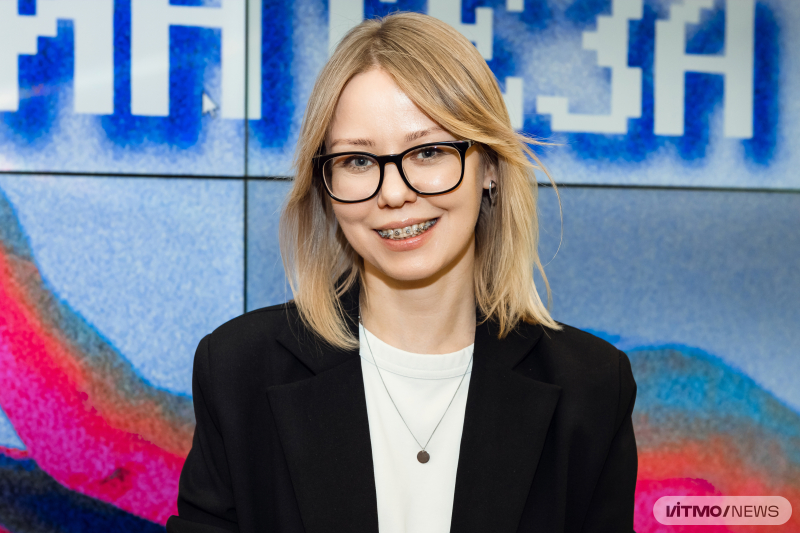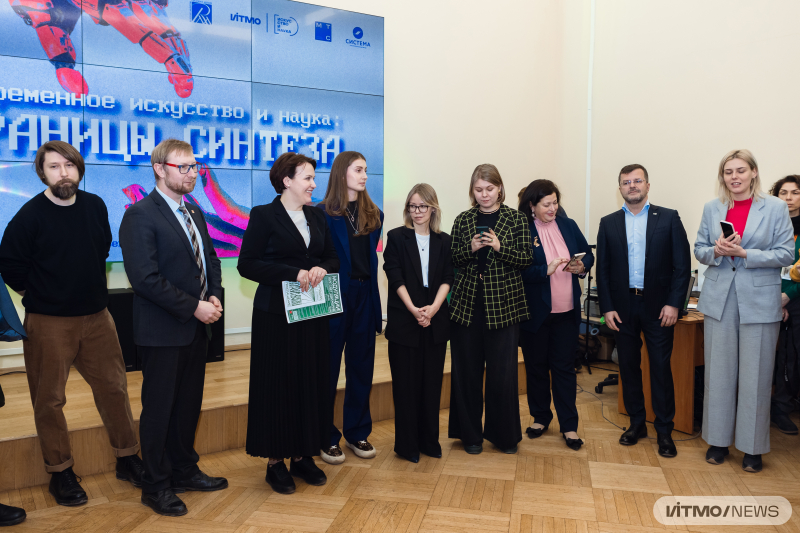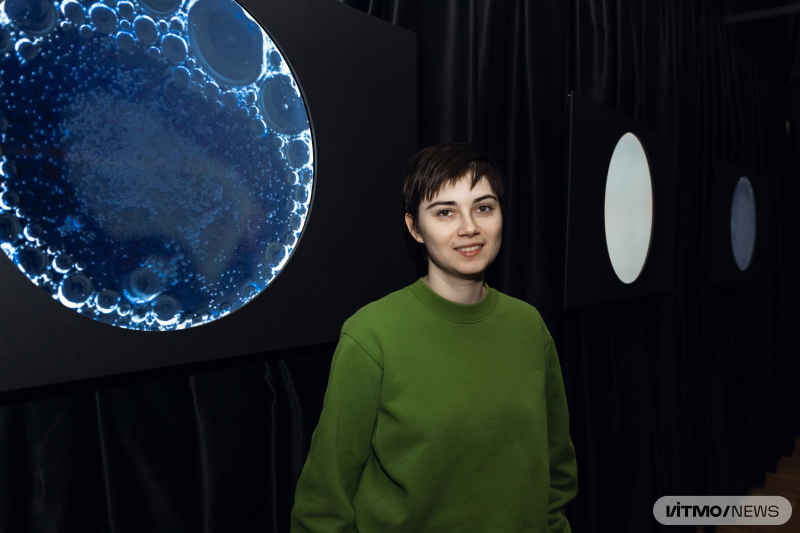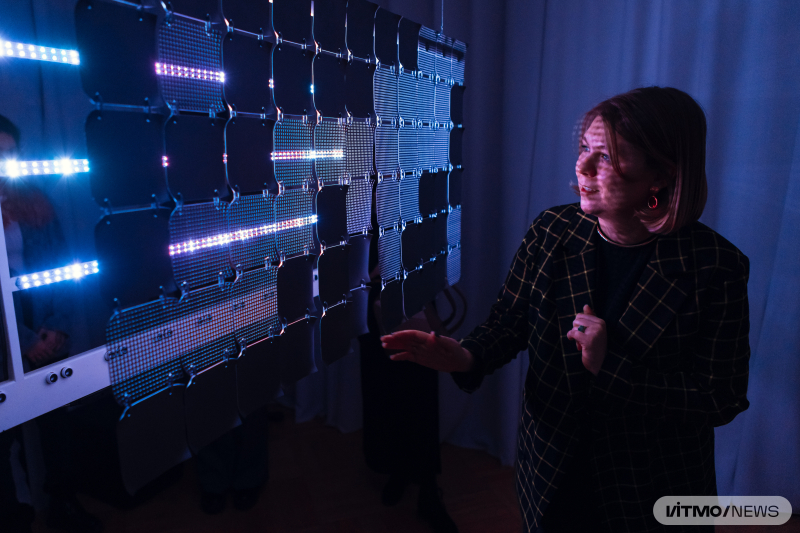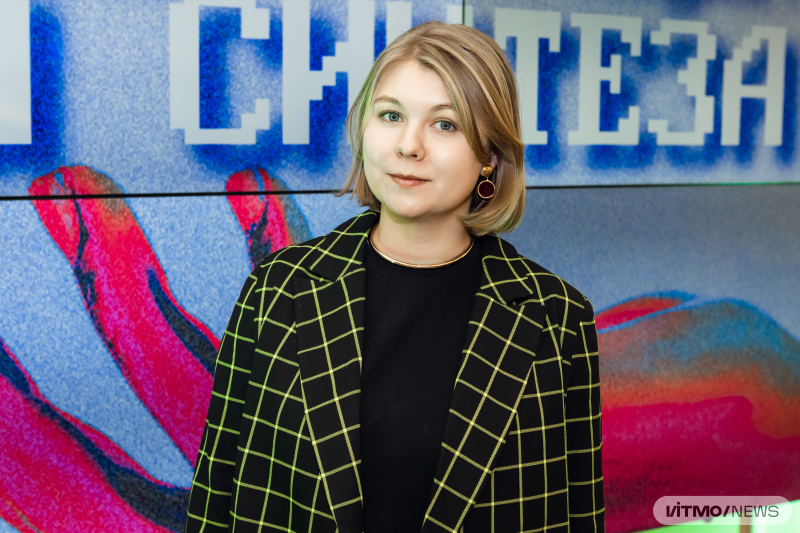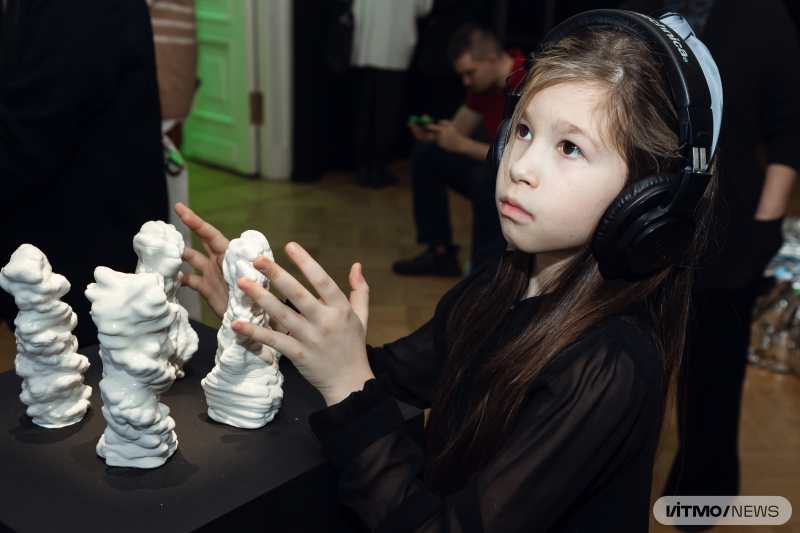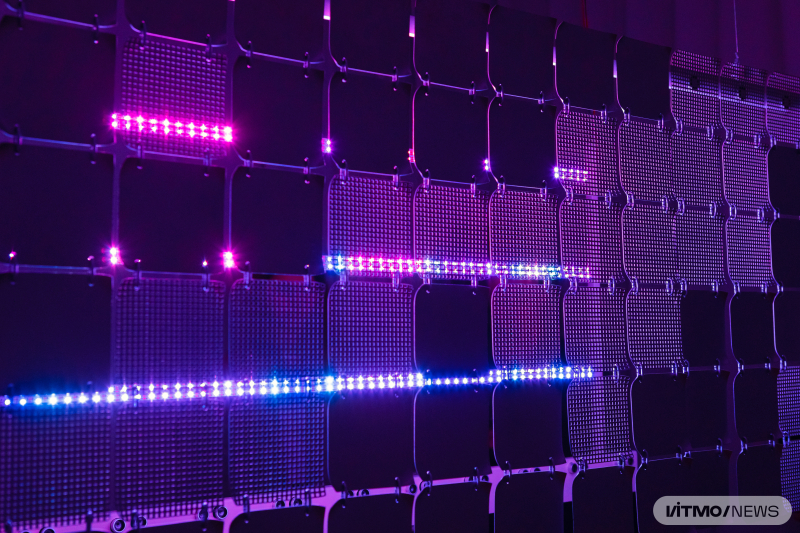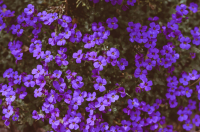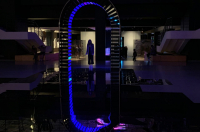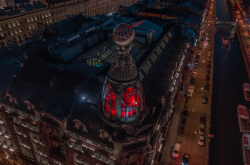Modulations: Sound, Light, Movement is part of the project Modern Art and Science: Borders of Synthesis, a joint initiative of ITMO’s Art & Science Center and the State Russian Museum. The initiative is curated by Anna Peycheva, the Russian Museum’s lead methodologist for educational and museum activities. The exhibition itself is supported by the Charitable Foundation Sistema and the MTS digital ecosystem, with the First Souvenir Company as a partner.
The exhibition focuses on the synergy between art, science, and technology. In their works, the artists examine the history of digital media and re-evaluate the understanding of media art, along with tracing the joint evolution of image and sound – a central motif in modern audio-visual culture. Guests of the exhibition can listen to the sounds of mushrooms, touch physical copies of human emotions, and take an auditory trip into an Antarctic oasis.
The curators of Modulations: Sound, Light, Movement are Khristina Ots, the head of the curator team at Art & Science Center, and Sergey Kostyrko, an artist and a PhD in physics and mathematics. Among the authors are both relative newcomers (including students and graduates of the Master’s program Art & Science) and renowned creators, such as Oleg Gudachev, Andre Svibovitch, Daria Smakhtina, and Maria Kuptsova.
“When we talk about art and science at the Russian Museum, we usually talk about classical art or 20th century art. There aren’t any examples of modern science art here. To fill that gap, we’ve decided to use our experimental space for a joint exhibition with ITMO. It’s great when modern art gets the opportunity to enter a dialogue with classical art in a conventional museum setting. I hope that this will become a frequent sight in the museums of Russia,” comments Anna Peycheva.
“The Art & Science Center has developed more than 15 exhibitions by now, but this one is our first project at an art museum of a national scale. Its main focus is light, sound, movement, and how they all combine and influence one another. Here, artists ask questions: how has technological progress affected our culture? How can we coexist with nature? Then, they suggest how we could use technology to study what is hidden – human emotions, the sounds of chemical reactions, and much more. As curators, we would like for guests not only to see the different branches and styles of modern science art, but also to rethink the role that technologies and audio-visual imagery have in their lives,” explains curator Khristina Ots.
The exhibition will remain open until March 10 in the Eastern Pavilion of the Mikhailovsky Castle in St. Petersburg, Russia. In addition to the art projects, guests of the exhibition can expect a lively program: lectures by leading methodologists and researchers from the Russian Museum, guided tours by science art experts, and performances by various modern artists. To buy a ticket, visit the official website of the Russian Museum.
